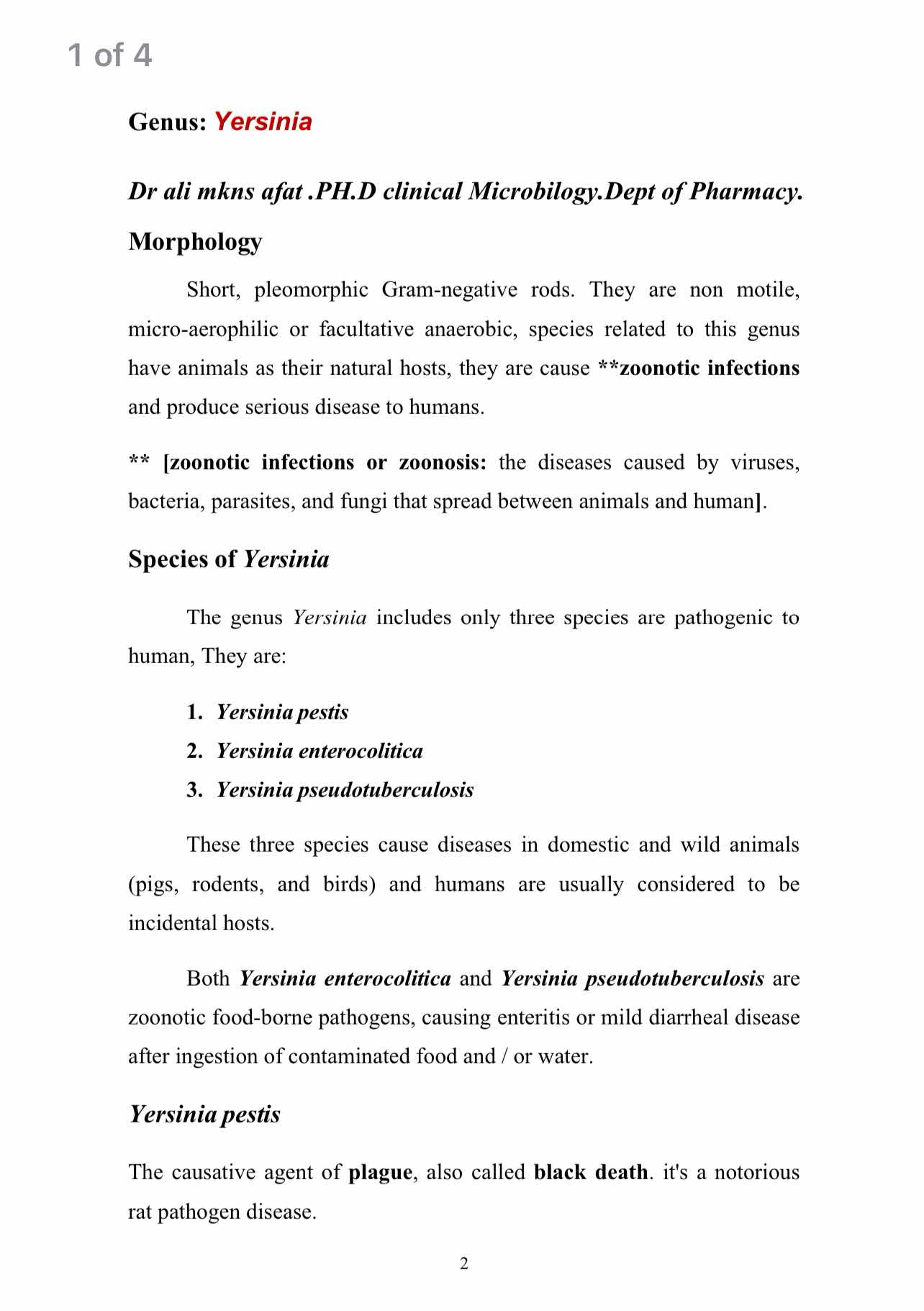What do we know about the genus Yersinia and its species, particularly in relation to zoonotic infections and diseases in humans?

Understand the Problem
The question is likely asking about the genus Yersinia, its morphology, the species within it, and their relevance to human health, specifically zoonotic infections.
Answer
Yersinia genus has 11 species; Y. pestis, Y. enterocolitica, and Y. pseudotuberculosis cause zoonotic diseases in humans.
The final answer is that the genus Yersinia includes 11 species, with 3 species, Yersinia pestis, Yersinia enterocolitica, and Yersinia pseudotuberculosis, known for causing zoonotic diseases in humans.
Answer for screen readers
The final answer is that the genus Yersinia includes 11 species, with 3 species, Yersinia pestis, Yersinia enterocolitica, and Yersinia pseudotuberculosis, known for causing zoonotic diseases in humans.
More Information
Yersinia pestis, responsible for the plague, is infamous for historical pandemics. Yersinia enterocolitica and Yersinia pseudotuberculosis typically cause gastrointestinal illnesses through contaminated food or water.
Tips
Mistakenly identifying all Yersinia species as pathogenic to humans when only three are proven to be.
Sources
- About Yersinia Infection - CDC - cdc.gov
- Yersinia - Wikipedia - en.wikipedia.org
- Yersinia - an overview | ScienceDirect Topics - sciencedirect.com
AI-generated content may contain errors. Please verify critical information